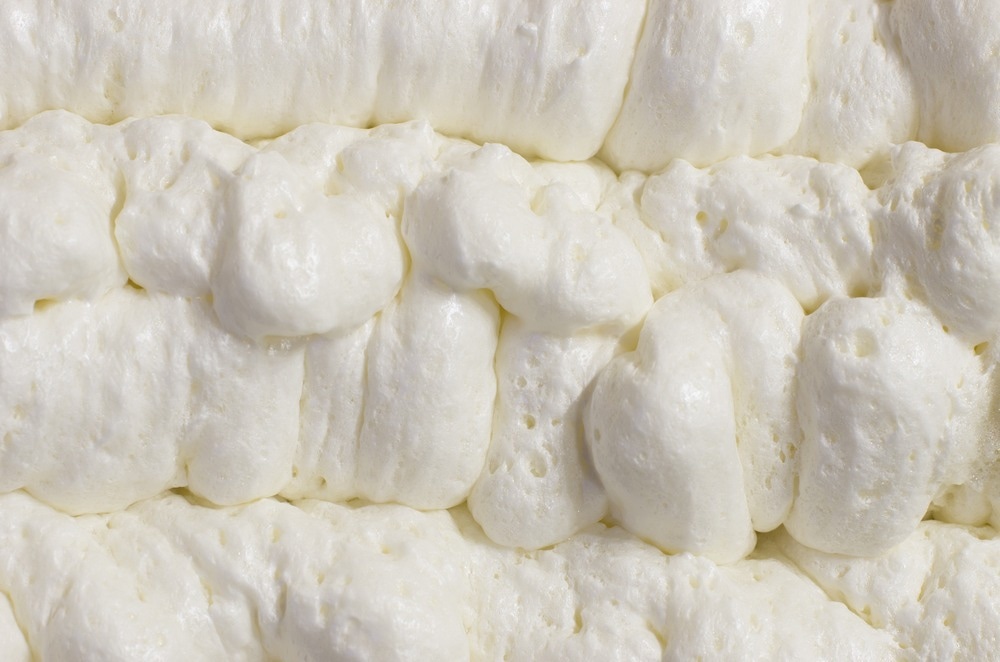There is growing interest in using different waste materials for making polymeric composites to shield against electromagnetic interference (EMI).

Study: Flexible and High-Performance Electromagnetic Shielding Materials from Waste Polyurethane Foams. Image Credit: SunnyMeansSixteen/Shutterstock.com
According to a paper published in the journal Industrial & Engineering Chemistry Research, waste polyurethane foam may be used to produce highly effective EMI shielding materials by covering the surface with carbon nanotubes and then hot pressing them.
The Importance of EMI Shielding Materials
Electromagnetic interferences are electromagnetic signals released by electrical circuits that disrupt the normal functioning of nearby electrical devices or inflict radiative damage upon living organisms.
The widespread use of gigahertz frequency electronic systems and communications equipment has increased electromagnetic pollution to unprecedented levels. Therefore, developing high-performance EMI shielding materials for various applications is imperative.
Traditional EMI Shielding Materials
Metals like aluminum, silver, copper and their alloys are the typical EMI shielding materials, exhibiting good EMI shielding behavior because of their high electrical conductivities and considerable magnetic losses.
Unfortunately, these traditional EMI shielding materials do not remove or lessen electromagnetic pollution. Virtually all the electromagnetic signals are reflected by the metallic sheets, shielding only the area directly behind these sheets and producing secondary electromagnetic wave pollution.
Several studies have been conducted over the past few years to develop EMI shielding materials based on polymeric materials that function by absorbing electromagnetic waves.
Conductive Polymeric Composites as EMI Shielding Materials
Conductive polymeric composites made from polymeric frameworks and conducting fillers have recently emerged as promising EMI shielding materials, with distinguishing benefits including minimal weight, high flexibility, and excellent capacity for absorbing electromagnetic waves.
Most conductive polymeric composites with separated structures are made by first combining polymeric particles or granules with conductive fillers, followed by hot pressing. In this procedure, the conductive fillers segregate the polymeric particles or granules.
This segregation is not favorable for stress transference, resulting in instability and even collapse of the separated structures.
Instead of the mere physical mixing, loading the conductive filler on a single continuous polymeric skeleton may generate a considerably more stable separated structure.
Reasons for Using Waste Polyurethane Foam
Polyurethane is an important polymeric material. Polyurethane foams have been extensively utilized in different applications, including seating, mattresses, and car upholsteries, because of their low cost, versatility, and high elasticity.
Vast volumes of waste polyurethane foams are regularly created. They are difficult to recycle and are often discarded in landfill or incinerated, resulting in significant environmental contamination.
The retrieval and high-value usage of waste polyurethane offer significant potential for preserving the environment and sustainable development.
Research Methodology
This paper presented an effective EMI shielding material having a skin-core separated structure. Multiwalled carbon nanotubes (MWCNTs) were distributed in an aqueous solution of cellulose nanofibers (CNFs) to accomplish then and then dip-coated upon the surface of the waste polyurethane foam skeleton.
A conductive composite of waste polyurethane foam, MWCNTs and CNFs, having a skin-core microscale structure, was created after hot pressing. The conductive MWCNT/CNF sheet acted as the skin and the nonconductive waste polyurethane foam skeleton functioned as the core.
Findings of the Research
This study presented a simple technique for producing practical and effective EMI shielding materials from waste polyurethane foam. The unique skin-core segregated structure allowed for an increase in the conductivity of the waste polyurethane foam composite with an increase in MWCNT loading.
A 6.6 wt% MWCNT loading enabled the waste polyurethane foam to achieve maximum electrical conductivity. The composite showed a significant increase in tensile strength and elongation at the break due to the continuous waste polyurethane foam skeleton, which was well preserved following compressive molding.
The EMI shielding effect demonstrated by the waste polyurethane foam composite with 6.6 wt% MWCNT loading was significantly greater than that of most previously reported EMI shielding materials.
The waste polyurethane foam composite displayed adequate flexibility and dependable EMI shielding performance. Even after 1000 cycles of mixing and bending, it maintained a strong EMI shielding effect.
The effective EMI shielding material produced in this work is expected to show great promise in multiple EMI shielding applications, presenting a viable technique for the sustainable use of solid polymeric wastes.
Reference
Zhang, J., Wang, Q., Huang, B., Xue, X., Li, M., Zhang, W., & Lu, C. (2022). Flexible and High-Performance Electromagnetic Shielding Materials from Waste Polyurethane Foams. Industrial & Engineering Chemistry Research. Available at: https://pubs.acs.org/doi/10.1021/acs.iecr.2c01940
Disclaimer: The views expressed here are those of the author expressed in their private capacity and do not necessarily represent the views of AZoM.com Limited T/A AZoNetwork the owner and operator of this website. This disclaimer forms part of the Terms and conditions of use of this website.